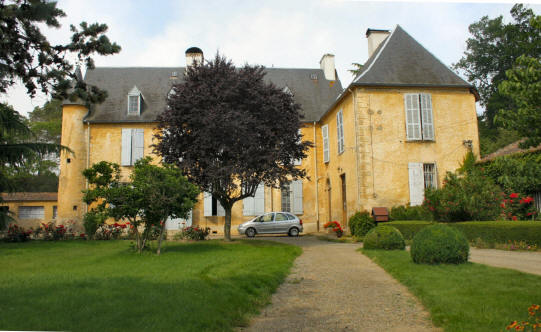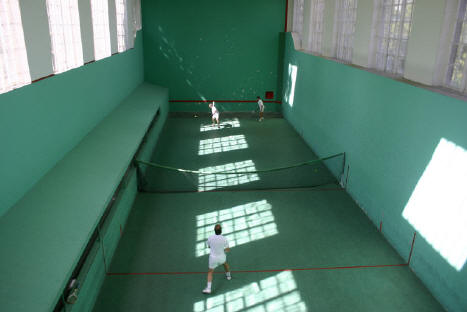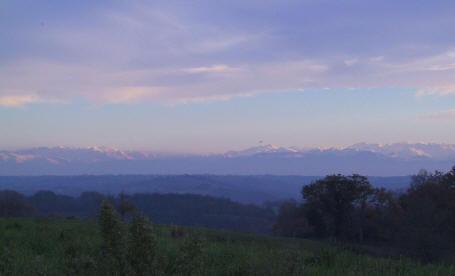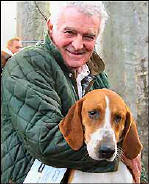PAU AND THE BEARN
Property in and around Pau has been popular with foreign buyers for almost 2 centuries. In the 19th Century the region was famed for its Spa towns and attracted many wealthy English gentry. They stamped their mark on the architecture of Pau which is still known by the French as "La Ville Anglaise". Pau is the Prefecture of the Department of the Pyrenees Atlantique, originally a fortified staging post on the Banks of the Gave de Pau.

Gaston Febus was responsible for the early development when he authorised his architect to construct a brick fortress. In 1450 Pau became the Capital of the Bearn. Henri d'Albret, lord of Béarn, married Marguerite d'Angoulême and they were responsible for the transformation of the existing Chateau.
Their grandson, Henri was born in 1553 and to mark the occasion, according to legend, Henri d'Albret rubbed his lips with garlic and Jurancon. Henri was later to proclaim himself as king of France in 1579, the first of the Bourbon dynasty. It was only in 1593 on converting back to Catholicism that he was officially crowned Henri IV of France at Chartres. This was devastating to his protestant supporters yet they were not forgotten as the Edict of Nantes signed in 1598 allowed them the freedom to practice their faith.
After the peninsular wars many of the officers who had fought in the area settled in Pau attracted by the mild climate and its therapeutic reputation for respiratory diseases.
 The first Golf course to be
built on the European continent was established here in 1856. It celibrates
150years this year and is one of the worlds oldest Golf courses. There
are some 650 members and the course is open to members, their guests
and visitors who book in advance. The course is open every day of the
week. There is a charming Victorian clubhouse and carefully prepared
meals are available in the restaurant.
The first Golf course to be
built on the European continent was established here in 1856. It celibrates
150years this year and is one of the worlds oldest Golf courses. There
are some 650 members and the course is open to members, their guests
and visitors who book in advance. The course is open every day of the
week. There is a charming Victorian clubhouse and carefully prepared
meals are available in the restaurant.

Jeu de Paume was played extensively at the Palais Beaumont and there are moves underway to re-establish the court which is now used for Trinquet, a version of the popular Basque game of Pelote. The existing court has recently been opened to real tennis enthusiasts each Sunday from 10am to 5pm.
Surrounding area
To the south of Pau one climbs rapidly into the foothills of the Pyrenees.
 This area is rich with cultural traditions and the countryside is quite
spectacular. The verdant Jurancon hills are speckled with elegant
homes and boutique vineyards famous for their white wines. Varietals
are Courbu, Gros Manseng and Petit Manseng.
The wines are generally dry,
but sweet if affected by Botrytis cinerea. Domaine Cauhapé, Domaine
Larredya and Clos Uroulat are our favourites. Oloron
St Marie, Navarrenx, Salies de Bearn, Sauveterre de Bearn, Bosdarros
and Salies de Bearn are all villages worth visiting.
This area is rich with cultural traditions and the countryside is quite
spectacular. The verdant Jurancon hills are speckled with elegant
homes and boutique vineyards famous for their white wines. Varietals
are Courbu, Gros Manseng and Petit Manseng.
The wines are generally dry,
but sweet if affected by Botrytis cinerea. Domaine Cauhapé, Domaine
Larredya and Clos Uroulat are our favourites. Oloron
St Marie, Navarrenx, Salies de Bearn, Sauveterre de Bearn, Bosdarros
and Salies de Bearn are all villages worth visiting.
To the north of Pau are the charming villages of Morlaas with its International School, Lembeye and Arzacq to name but a few. The gentle rolling countryside of the Bearn with the Pyrenees Mountains as a backdrop is a typical view from many of the Béarnaise properties.
Pau Hunt Fox hunting has survived here since 1842 and due to the bans on hunting in the UK there is renewed interest in developing the activity with the likelihood that hounds will soon be relocated from the UK.
Flights
Pau is well served for air travel having flights to London and to Amsterdam with Transavia. There are also of course all the schedule Air France flights to regional airports within France.
Places to Stay
Please find a selection of b&b, hotels, gites and places to stay in the Pau region. If you would like to recommend your hotel or b&b/gite please send us an email.








